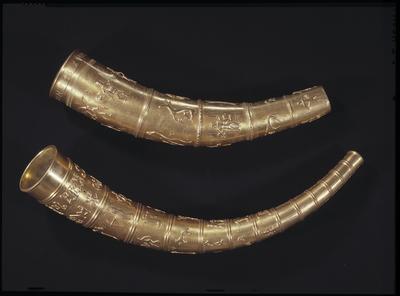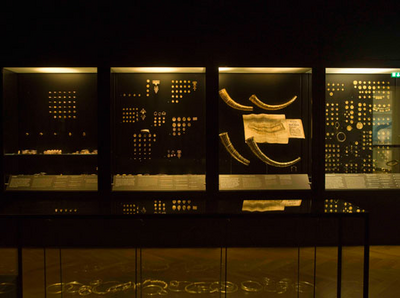The Golden Horns
Amongst the most famous finds from Danish prehistory are the Golden Horns. These are not only unique; their story has also been a very dramatic one. The Golden Horns were made around the year 400 AD and were decorated with both Nordic and Roman motifs. The combined weight of the horns was nearly 7 kg. The long horn was found in 1639 at Gallehus, near Møgeltønder, in Southern Jutland. A few metres away the short horn was found in 1734. This bore the runic inscription ekhlewagastiR : holtijaR : horna : tawido, in English “I Lægæst, son of Holt (or “from Holt”) made the horn”. Both horns were stolen and melted down in 1802. The appearance of the horns is known solely from drawings dating to the 17th and 18th centuries. Therefore many details are uncertain. The copies made in 1859-60 are too large, but presumably show the proper shape, while the twisted set from the 1970s have the right size.




